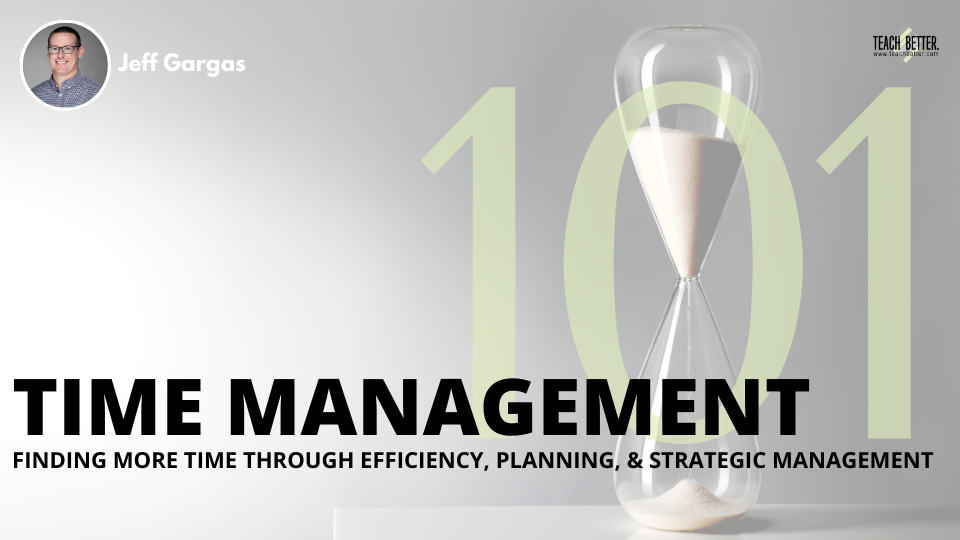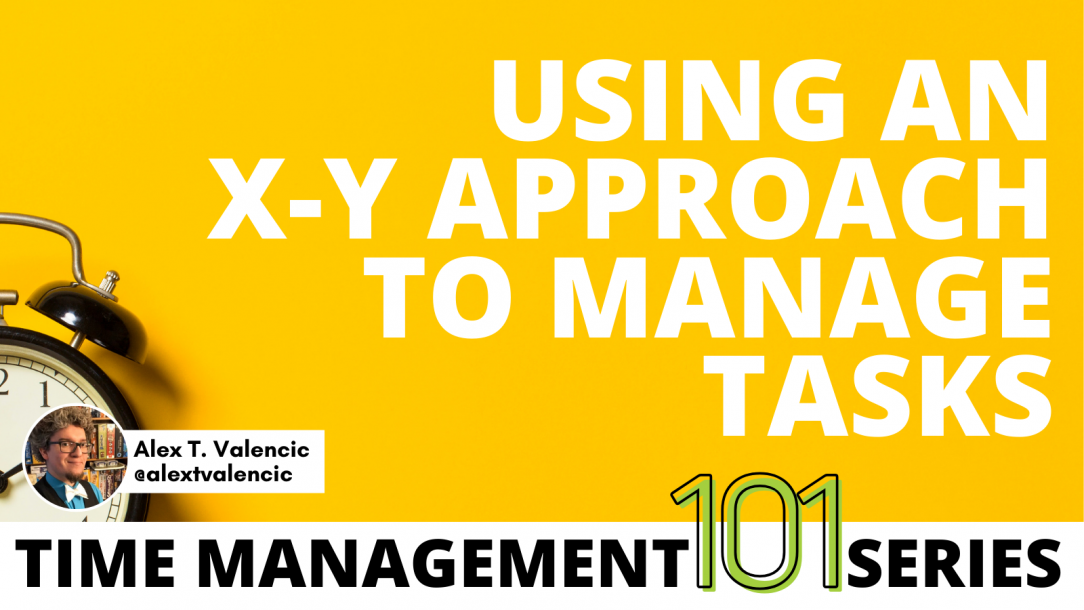TL;DR:
- The X-Y Approach can help you to communicate with others about which tasks should be a priority.
- When asked to take on a new task, use the X-Y Approach by saying, “I can start working on X. But that is going to take away from my time to work on Y. Can you let me know which is more important?”
You’ve been there, I’m sure. You have been asked to serve on a committee or take on a task in your building. You’ve been asked to support another teacher. Or you’ve been asked to add one more student to your already bursting-at-the-seams-even-with-COVID-restrictions class. And your principal or a district administrator approaches you and asks you if you can do one more thing.
You’ve already had The Talk. Several times. You know, the “if you are going to add something more to my plate then it would really help if you would take something off my plate” talk. Heck, you may have even seen your school leaders retweeting those quotes from Hans and Jennifer Appel about what is and is not the plate, or the snippets from Todd Whitaker’s “Shifting the Monkey.”
There is also that niggling feeling in the back of your mind that maybe your teacher’s union should try to get the phrase “other duties as assigned” stricken out from every single job description in the district so that you can just say, “Nope, sorry. Not my circus, not my monkeys.”
None of this helps at the moment, though.
Your principal is looking to you to help lead and you know it is something you can do.
Your district curriculum director needs your expertise in evaluating a new program. You happen to know all about it because you wrote a paper about this very program when you were in grad school.
You want to say yes. But you also don’t want to have to take on yet another thing, especially after noticing that your three-year-old has started referring to you as their “weekend parent.” (You and your partner aren’t separated, you just never seem to get home before the little one goes to bed.)
This simple approach has been a lifesaver for me! It helps me communicate my workflow more clearly. It lets me understand what our priorities are. And it reminds my school leaders of the tasks that they have assigned to me. Click To TweetIf you were to ask my wife, she would tell you that my greatest personality flaw is my inability to say no. I stretch myself thin and then stretch myself thinner, never seeming to break but always right on the verge of collapse. I seemingly thrive on being busy and on being on the go. So when I found myself serving on just about every committee in my district, going to all the PD sessions, and taking on multiple roles in my building at once, I knew I had to find a way to better manage myself, rather than trying to manage my time.
The solution I came up with seems remarkably simple in hindsight. It is my X-Y Approach.
Here is how it works. My boss has given me an important assignment to work on and then approaches me to ask me to take on another major task. Instead of simply saying yes and starting the vicious cycle of taking on too much or of saying no and being viewed as defiant, I respond, “I can start working on X but that is going to take away from my time to work on Y. Can you let me know which is more important?”
There are typically three responses:
- Don’t worry about X, I want you to keep working on Y.
- Let’s set Y aside for the time being; I need you to get X done.
- Here is the timeline; can you finish Y and then work on X in time?
This simple approach has been a lifesaver for me! It helps me communicate my workflow more clearly. It lets me understand what our priorities are. And it reminds my school leaders of the tasks that they have assigned to me.
[scroll down to keep reading]
And, of course, the X-Y Approach works outside of work!
I used to volunteer as the leader of a Cub Scout Pack with my church. Someone approached me about volunteering to work with the teenage boys in the church, too. I responded, “I can work with the older boys, but this would take away from my time with the Cub Scouts. Which is more important?”
This reminded the individual who had approached me of the other volunteer work I was doing and the request to work with the teens was rescinded so that I could continue to work with the younger Scouts instead.
When I am working on a repair project at home, my wife may ask me to go outside and take care of some debris that has fallen in the backyard. I will respond, “I can take care of the debris once I am done fixing the toilet. Is that okay?” This allows me to make clear that I will take on the second task but I want to finish the first one before doing so.
So the next time you get asked to help out with something but you feel like you just can’t add one more thing to your already full plate, trying using the X-Y Approach. Then shoot me a message and let me know how it worked out!

I can’t take credit for this idea – I got it from one of my own kids’ teachers a few years back. But I have to say, it is brilliant! Rather than chasing students down to finish work in class or at home, which can slow down the flow of your day, designate one class period every week or every other week as a “Priority Period.” This time allows students who need to finish tasks the time to do so. It also allows you more time to conference with students as needed. For students who may be all caught up, have them work on higher-order thinking activities either alone, or with classmates who are also all caught up. With so many different projects, assignments, personalized goals, etc., that kids have going on, there is usually always something for them to do. This strategy is not only a time-saver for you, but also for your students. – Becky Thal, 5th grade math/science teacher in New Jersey (@MrsRThal)
See the full Time Management 101 blog series here!
About Alex T. Valencic
Alex Valencic is an educator, former small business owner, Boy Scout, volunteer drug prevention specialist, unrepentant bibliophile, and a geek of all things. He worked as a substitute teacher for three years before achieving his lifelong dream of teaching fourth grade, which he did for seven years in Urbana, Illinois, before accepting his current position as the Curriculum Coordinator for 21st Century Teaching and Learning in Freeport, Illinois, where he not only supports innovative educational practices in the classroom but also oversees social studies, science, and nearly all of the elective courses in the district.



